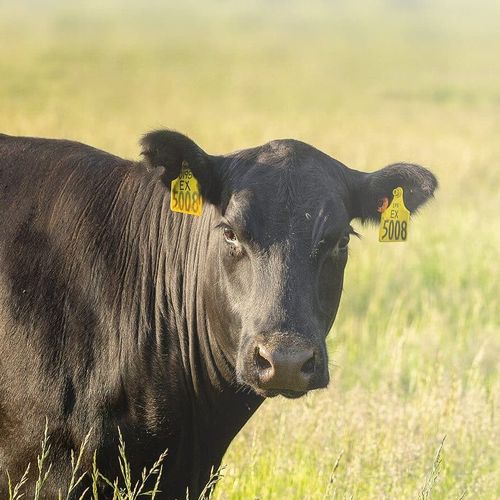Today, the National Cattlemen’s Beef Association (NCBA) filed comments on the U.S. Department of Agriculture’s (USDA) proposed rule “Use of Electronic Identification Eartags as Official Identification in Cattle and Bison” to emphasize the importance of electronic animal identification to protect the cattle industry from the threat of a foreign animal disease. USDA’s proposed rule would apply to cattle 18-months or older only when moving interstate.
“An outbreak of a foreign animal disease in the United States, like foot-and-mouth disease (FMD), would be catastrophic to the cattle industry and our way of life,” said NCBA President Todd Wilkinson, a South Dakota cattle producer. “Traceability is about risk protection and ensuring we have the tools to quickly identify and respond to an outbreak while strengthening consumer trust in our high-quality beef. Our comments emphasize the importance of protecting the U.S. cattle herd from the threat of a foreign animal disease while also protecting producers’ private data, limiting the cost of tagging devices, and operating at the speed of commerce.”
Without a national traceability system in place, the impact of a foreign animal disease outbreak would be magnified. For example, an FMD outbreak in the United States would lead to an immediate stop of all livestock movement for at least 72 hours. Most major export markets would close to U.S. beef and the estimated economic impact could be as high as $228 billion.
A traceability system supports cattle producers quickly returning to normal operations after a disease outbreak. Traceability data would allow producers in low-risk areas to resume transporting cattle, while helping animal health officials stop the spread of disease in high-risk areas. A traceability program also helps expedite the return to an FMD-free designation, which is beneficial for trading relationships and consumer trust in beef.
NCBA said that they appreciate the flexibility of the agency to recognize any official identification device in place before the implementation date of the final rule for EID for the life of the animal to avoid the need for retagging large numbers of cattle. Additionally, the acceptance of alternate forms of identification, such as registered brands, tattoos, and other identification methods as acceptable to breed organizations in lieu of EID tags when agreed upon by shipping and receiving states will assist in the transition to EID technology.
The cost of implementation of EID was a concern for NCBA though. In the past, APHIS has provided the states and accredited veterinarians with low frequency (LF) RFID tags as a no cost alternative to the metal clip tags available from APHIS for use in replacement heifers vaccinated against brucellosis. NCBA asked USDA if the agency plans to encourage the transition to EID through the provision of low-cost or no-cost tags for replacement heifers.
The proposed rule identifies a timeline for implementation occurring six months after the publication date of the final rule in the Federal Register. The agency anticipates implementation of EID as early as the first quarter of 2024 and NCBA agrees with this timeline. Additionally, NCBA is supportive of voluntary EID to ultimately include all classes of cattle by 2026. NCBA believes that separate rulemaking is required to phase in feeder cattle to EID.
View the full comments here.
Background
As a grassroots organization, NCBA’s perspective on traceability has been developed by cattle producers who serve on the NCBA Traceability Working Group and by grassroots members who voted on traceability policy at the 2023 Cattle Industry Convention. NCBA believes that any traceability system:
- Is industry driven.
- To serve the needs and interests of beef cattle producers.
- In coordination with current and future federal, state, and tribal government animal disease traceability programs.
- Is capable of being managed and overseen by private entities that address animal disease traceability needs of the beef cattle industry in coordination with government, state, and tribal disease tracing mechanisms.
- Maintains producer data privacy.
- Is equitable to all industry sectors.
- Is compatible with common industry practices.
- Operates at the speed of commerce.
- Is credible in domestic and international markets.
- Uses electronic identification devices and electronic data transfer.
###
NCBA


